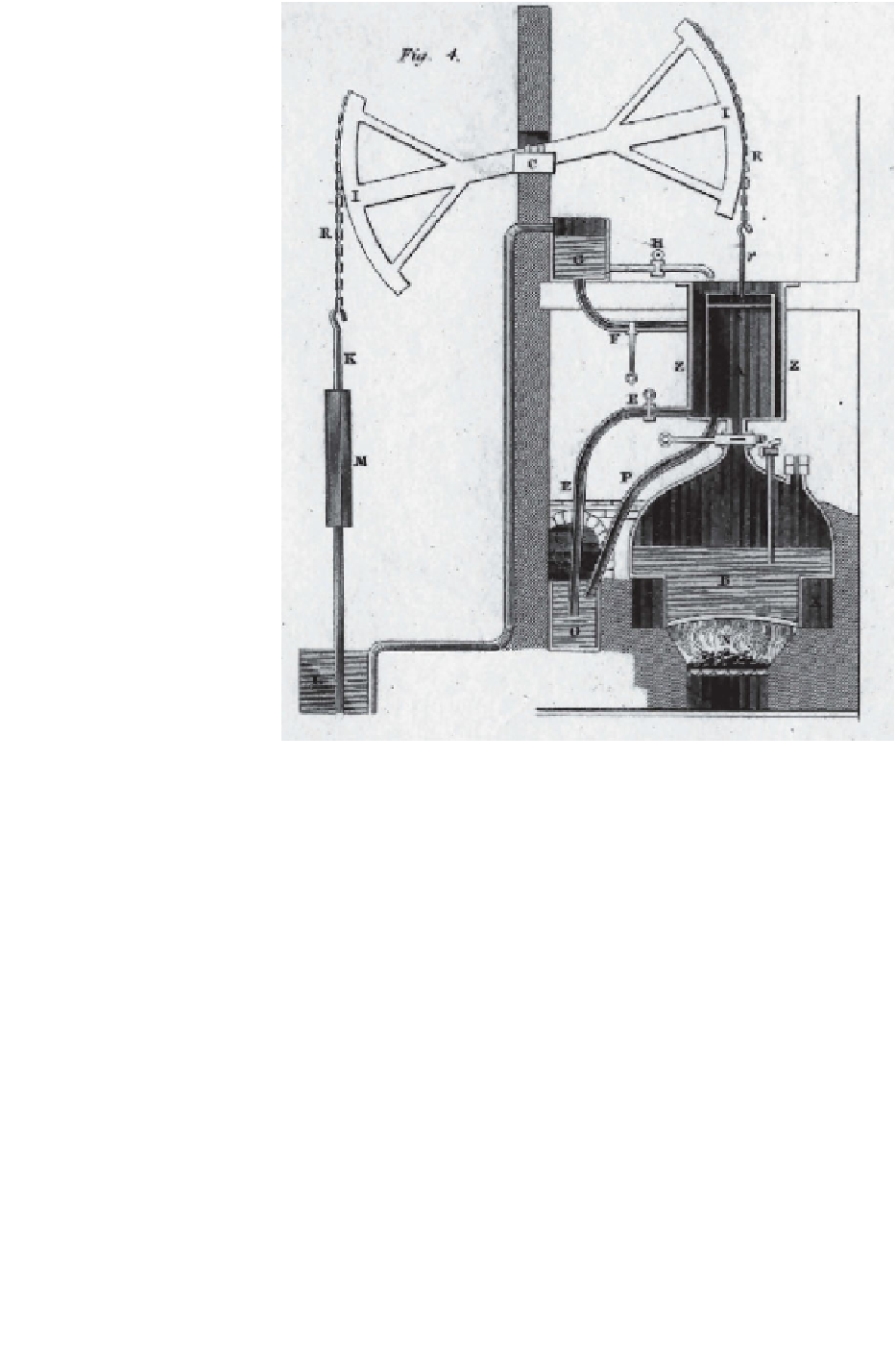Geoscience Reference
In-Depth Information
(a)
Figure 4.1.
(a) Newcomen steam engine. From Brewster (1832), www.uh.edu/engines/epi69.htm and
www.uh.edu/engines/watt2.gif.
In 1712,
Thomas Newcomen
(1663-1729), an
English engineer, developed a more efficient steam
engine than Savery by introducing a piston. Water
evaporated into the steam chamber under the piston
pushed the piston and an attached lever up (Figure
4.1a), producing mechanical energy. Liquid water was
then squirted into the steam chamber to recondense the
vapor, creating a vacuum that pulled the piston and lever
down.
Because Savery had a patent on the steam engine,
Newcomen was forced to enter into partnership with
Savery to market the Newcomen engine. Newcomen's
engine was used to pump water out of mines and to
power waterwheels. Steam engines in the early eigh-
teenth century were inefficient, capturing only 1 percent
of their input raw energy (McNeill, 2000). Because coal
mines were not located in cities, early steam engines did
not contribute much to urban pollution.
In 1763, Scottish engineer and inventor
James Watt
(1736-1819) was given a Newcomen steam engine to
repair. He found an inefficiency with the original engine
in that it allowed evaporation and condensation to occur
in the same chamber. The squirting of cold water to
condense vapor and create a vacuum for pulling the
piston down resulted in more heat required to produce
steam to push the piston back up if both operations
occurred in the same chamber rather than in different
chambers. Watt overcame this shortcoming by develop-
ing two chambers: one in which condensation occurred,
and the second in which evaporation occurred. The con-
densation chamber stayed cold due to the squirting of
cold water into it, whereas the evaporation chamber

Search WWH ::

Custom Search